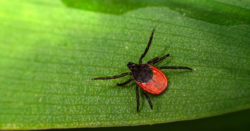As a pet owner, one of the most frustrating situations you can deal with is fleas and ticks. These parasitic pests can cause discomfort and potential disease for not only your beloved dog or cat but for anyone else in your home too. While dealing with an active infestation may sound like a nightmare, there are measures you can take to help treat fleas and ticks when they make their way into your home.
Identify the Source
The first thing you want to do when tackling a flea and tick problem is identifying the source of the issue. Many times, this will often be your pet itself, as both pest species need a host to survive. Other times, your flea issue could stem from a rodent problem you may be experiencing, as rodents are a common host for fleas and ticks. If you are experiencing fleas or ticks without having pets, contact a local pest control company to help aid in rodent control.
Clean the Infestation Areas
Assuming your pet is the source of the issue, you want to make sure to thoroughly wash and vacuum any carpeted or upholstered area your pet frequently spends time on. These areas are where flea eggs will land when your pet scratches or shakes from itching adult flea bites. Once the eggs hatch, the larvae will feed on organic debris found in your carpet, couch, or pet bedding. Once big enough, they will spin a cocoon and eventually hatch into adult fleas, attaching to their host and starting the cycle over again. This cycle is why it is crucial to eliminate eggs and larvae before they become adults. Washing pet bedding, couch covers, or other washable breeding sites in hot water and drying on high heat will eliminate the eggs and larvae. This practice is also beneficial if you are dealing with fleas and have no pets in the home. Vacuuming constantly is necessary until the issue is resolved. Be sure to dispose of all the vacuumed debris in a bag outside to prevent eggs or larvae from reentering the environment.
Wash Your Pet
This step is important for dealing with both fleas and ticks. Giving your pet a warm flea and tick bath will eliminate any eggs, larvae, and adult fleas and ticks on your pet. This step is essential as it will relieve your pet of itching which can further spread fleas throughout your home. Make sure to contact your local veterinarian and ask for the right type of flea and tick shampoo for your pet. After the bath, make sure to comb your pet’s hair thoroughly for any missed flea eggs and debris.
Although these tips will help you deal with an active infestation, they do little in the way of preventing one. All flea and tick problems originate in one place, the outdoors. Controlling them inside your home is a conquerable task but controlling them outside can be a new challenge. If you are interested in preventing fleas and ticks at the source or need additional help with an inside problem, please reach out to your local pest control company for a thorough inspection and treatment plan.


